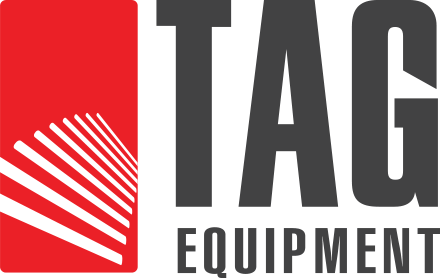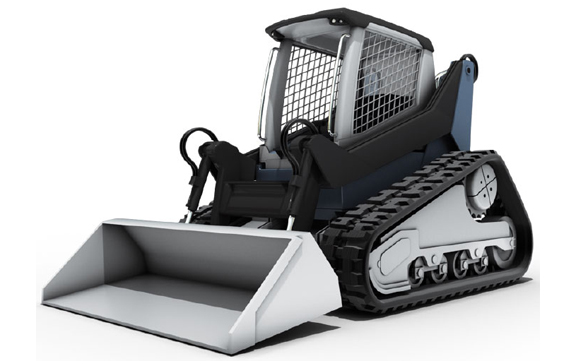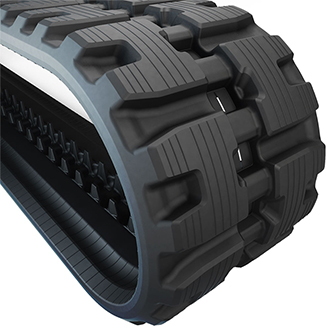Rubber tracks are ideal for skid steers and are suitable for several applications in different operating and ground conditions. However, they can experience damage over their lifetime. This may affect the continued use of the skid steer tracks or cause permanent damage, requiring complete replacement. Read on to learn everything about track damage so you can determine the best ways to extend their life.
Types of Rubber Track Damage You May Experience During Operation
Embedded Steel Cords are Cut Off or Severed
When the rubber track tension exceeds the breaking strength of the embedded cords, it causes them to get cut. It also occurs when the track is derailing as the idler rides on the projections of the links and causes a breakdown of the equipment. This situation often requires the replacement of the skid steer tracks.
Preventive Measures to Reduce the Risk of Severed Cords
- Perform a regular on-site inspection to maintain the recommended track tension level.
- Avoid making swift turns on rocky and bumpy surfaces.
- Drive carefully to avoid damage to the skid steer track and undercarriage because of sharp stones and other objects on the ground.
Gradual Abrasion of Embedded Metal Parts
Some of the reasons for accelerated abrasion of sprockets and idlers are:
- Improper sprocket configuration which does not correspond correctly with the design of the embeds
- Excessive reverse operation of the tracked machine
- Using the skid steer tracks on sandy soil
- Heavy loads on rubber tracks
- Over-tensioning of the track
In such cases, you should consider buying replacement rubber tracks when the width of the embedded link shrinks by over two-thirds of its original width.
Preventing Abrasion of Metal Parts in Skid Steer Tracks
Using the machine under normal operating conditions is the best way to reduce the chances of abrasion. In addition, be sure to check the level of abrasion when working on towing and dozing projects and operating on sandy surfaces.
Displacement of Embed Due to External Factors
Embeds are adhered between the rubber and steel cords of a track and can be damaged in the following cases:
- When a rubber track derails, it may get stuck between the undercarriage or guide frames, causing the embeds to separate.
- Abraded sprockets often cause the embeds to separate from the tracks prematurely.
The ideal way to manage this damage is to look for a replacement rubber track, even for partial separation of the embed.
Preventing Embed Separation
You can help avoid embed separation by maintaining the recommended tension level, avoiding quick turns on harsh terrains, and replacing the abraded parts immediately.
Deterioration and Separation of Embeds Due to Corrosion
Acidic surfaces, excessively salty surroundings, and compost on the ground often cause the embeds to corrode and separate from the tracks’ rubber body. It is best to find a new rubber track as a replacement even if the embeds get partially separated.
Preventing Embed Corrosion
If you use your skid steer on salty or acidic terrains, wash thoroughly with water, dry, and store them properly. This way, you can ensure the tracks last long.
Cuts on Lug Side of the Rubber Track
When you drive the tracked machine over sharp objects or projections, it causes cuts on the lug side of the rubber. This can lead to damage when making turns on harsh terrains. Moreover, when the cuts extend to the embedded steel links, they may break.
Preventing Cuts on Skid Steer Tracks
Operators should drive carefully, especially on construction and demolition sites, rocky terrains, and stump-covered ground. In addition, avoid driving at high speed, making quick turns, and overloading the skid steer when working on such surfaces. Perform regular inspections and repair the cuts on the tracks immediately with cold vulcanization rubber.
Cracks on the Rubber Track’s Lug Side
During operation, stress on rubber tracks causes fatigue, leading to cracks on the lug side. This often deteriorates and further damages the skid steer tracks. It is wise to replace the tracks if you notice the deep cracking that exposes the steel cords.
Preventing Cracks on Rubber Tracks
Although tracks are manufactured using unique rubber compounds to prevent cracking caused by fatigue, external damage can increase the risk of cracks. In addition to the careful operation of the machine, store the tracks in a well-ventilated room with no exposure to snow, rain, and sunlight when not in use.
Rubber Tracks and Tension
Proper tension is critical to enhancing a rubber track’s life. The embedded steel cord can be stressed if it is too high, causing failure. Maintaining proper track tension is essential to maximize the machine’s operating hours. Moreover, the elongation of the track may lead to derailment and breakdown of the equipment.
Rubber Track and Undercarriage Wear
The cost of the undercarriage is typically around 20% of the purchase price of a tracked skid steer. In addition, almost 50% of maintenance costs over the machine’s life can be attributed to the undercarriage. It is essential to carefully match the parts’ strength, tolerance, wear limits, and hardness. Although you cannot eliminate wear and tear, it is possible to prolong the components’ life and reduce maintenance expenses.
Get High-Quality Rubber Tracks for Skid Steers
Tag Equipment is a reputable supplier of rubber tracks for compact equipment, offering the highest quality products at competitive prices to ensure 100% customer satisfaction. We are also an authorized distributor of Camso tracks.
Our inventory includes rubber tracks for all makes and models, such as Bobcat, John Deere, CAT, Case, GEHL, Kubota, Volvo, New Holland, and Takeuchi. We offer fast shipping to ensure you receive the products on time.
For more information about skid steer tracks and tires, call us at 416-716-5850 or fill out our online contact form. Our experts will listen to your requirements, answer your questions, and help you select the most suitable parts for your equipment.
Also Read:


